



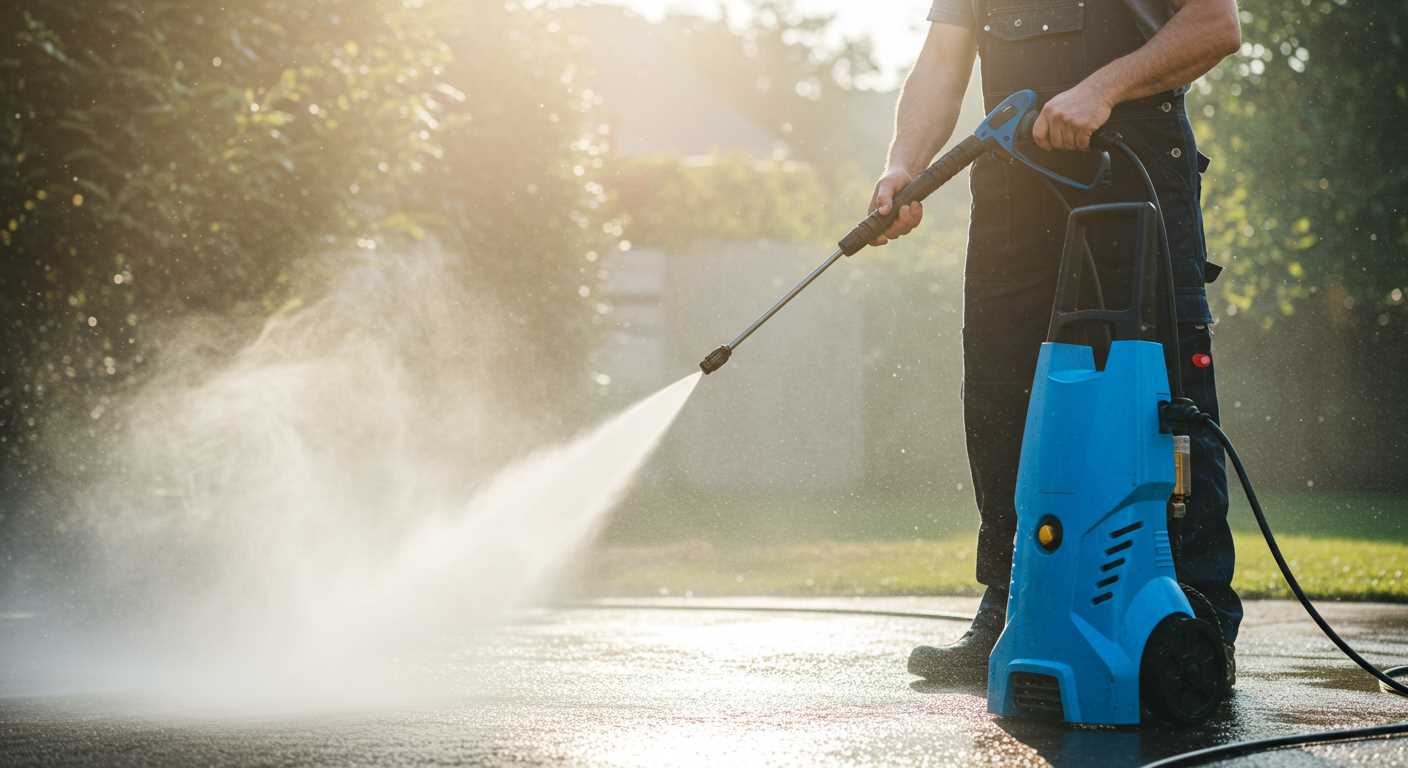
To significantly enhance the output of your cleaning equipment, consider using a nozzle with a narrower spray pattern. A 15-degree or 25-degree nozzle can increase the force of the water stream, making it ideal for tackling stubborn grime on surfaces such as driveways or patios. During my time with cleaning machinery, I found that the right nozzle made all the difference in achieving optimal results.
A well-maintained unit is crucial. Regularly check and replace worn-out seals and hoses. I recall a project where a simple hose replacement restored a machine’s lost power, turning it into a reliable workhorse once again. Neglecting these components can lead to pressure loss and inefficient operation.
Utilising the correct detergent can also amplify the cleaning action. For heavily soiled areas, I recommend applying a foaming cleaner specifically designed for high-pressure systems. This not only helps to break down dirt more effectively but also allows for easier rinsing afterwards. In my experience, using the right product saved me hours of scrubbing.
Lastly, maintaining the right distance from the surface being cleaned is essential. Too close, and you risk damaging the material; too far, and you lose pressure. I’ve learned through trial and error that a distance of about 12 inches usually strikes the perfect balance. Keep these strategies in mind, and you’ll see a remarkable boost in your cleaning effectiveness.
Understanding Pressure Washer Specifications
To maximise the potential of any cleaning device, focus on the specifications that define its performance. Key metrics include the output pressure measured in PSI (pounds per square inch) and the water flow rate in GPM (gallons per minute). Familiarity with these figures can lead to better usage.
Key Specifications to Consider
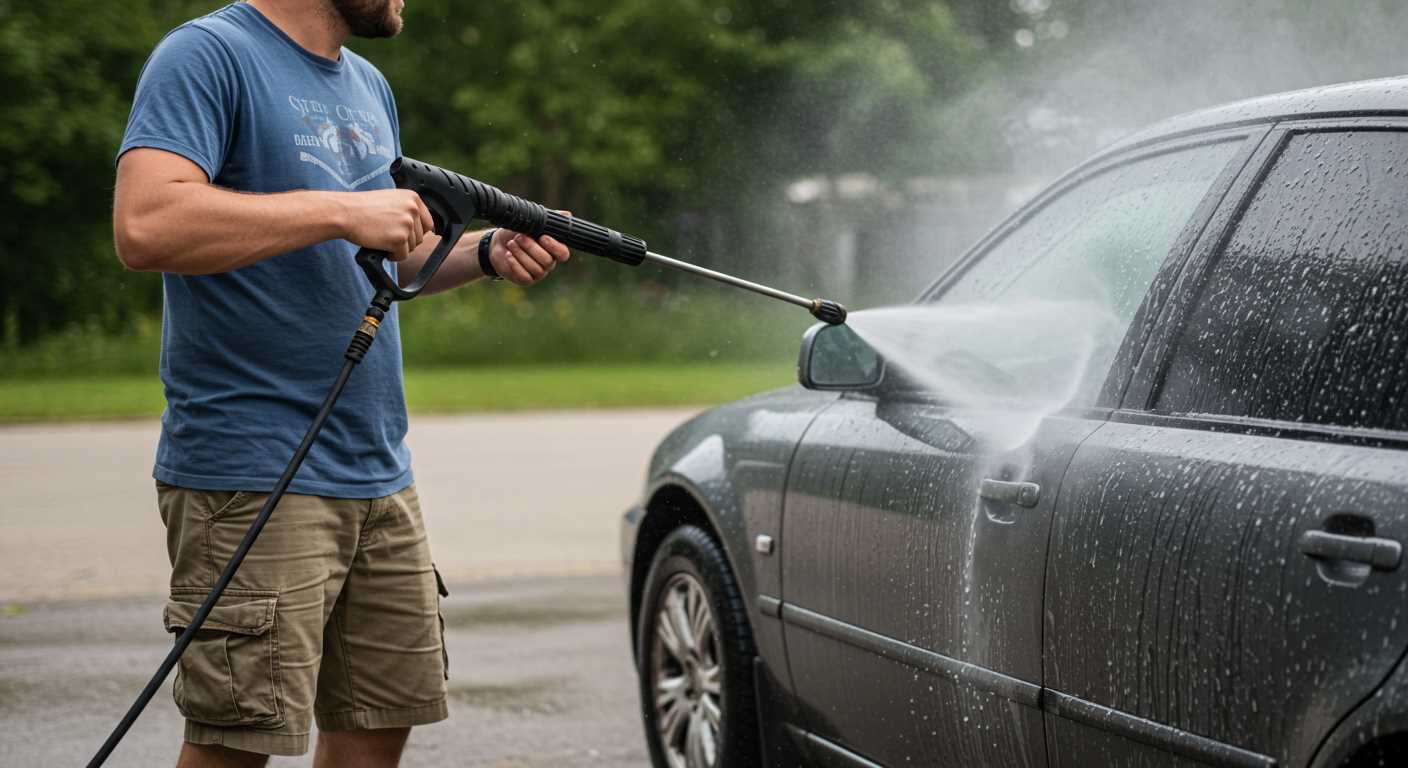
- PSI: Higher PSI values indicate stronger cleaning power. However, be cautious; not all surfaces can withstand high pressure. Use a lower PSI for delicate materials.
- GPM: This reflects the volume of water your equipment can dispense. A higher flow rate allows for quicker cleaning but may dilute the cleaning solution’s effectiveness.
- Motor Type: Electric motors are quieter and require less maintenance compared to gas motors, which typically provide greater power. Choose based on your cleaning needs.
- Nozzle Types: Interchangeable nozzles offer varied spray patterns. For instance, a narrow nozzle concentrates pressure for tough stains, while a wider spray is gentle for soft surfaces.
Getting Familiar with Your Device
Understanding the manual that comes with your machine is crucial. Each model has unique features that can significantly impact performance. For instance, I once misjudged the effect of an adjustable nozzle on an electric model, which resulted in subpar cleaning results. After realising the importance of matching the nozzle with the task, my efficiency improved dramatically.
Additionally, ensure that the equipment is well-maintained. Regular inspections of hoses, connectors, and filters can prevent drops in performance. I once encountered a machine that was barely functioning due to a clogged filter. A simple clean-up restored its power and efficiency, demonstrating the importance of routine checks.
In conclusion, being well-versed in the specifications and maintaining your device can greatly enhance its performance. This knowledge not only optimises cleaning efforts but also extends the lifespan of the equipment.
Choosing the Right Nozzle for Maximum Pressure
Opt for a zero-degree nozzle for concentrated power. This nozzle delivers a narrow stream, ideal for tough stains on concrete or brick surfaces. Just be cautious; the intensity can damage softer materials. I learned this the hard way when I accidentally stripped paint off a wooden deck during a cleaning session.
Understanding Nozzle Types
Different nozzles serve various cleaning tasks. The 15-degree nozzle offers a wider spray while still being effective for stubborn grime. I often use it for cleaning driveways and patios, where a bit of surface area coverage is beneficial without sacrificing cleaning strength. For general use, the 25-degree nozzle is my go-to, balancing efficiency and safety for most outdoor surfaces.
Adjusting Pressure Settings
Check if your equipment allows adjustments in pressure. If it does, pairing the right nozzle with the correct setting amplifies the cleaning efficacy. During one project, I switched from a 25-degree to a 15-degree nozzle while increasing the pressure, and the results were impressive. The dirt practically vanished!
Consider the material of the surface being cleaned. Harder surfaces withstand higher pressures and narrow nozzles. Always test a small, inconspicuous area first. I recommend keeping a variety of nozzles on hand to adapt to different tasks and surfaces, ensuring you achieve the best results without causing damage.
Adjusting Water Supply for Optimal Performance
To maximise your unit’s capabilities, ensure the water supply is precise. A consistent flow rate of at least 5 litres per minute is recommended for most models. If you notice a drop in output, consider using a larger diameter hose to reduce friction loss. I once switched from a standard garden hose to a 19mm diameter version and immediately felt the difference in performance. The increased flow allowed my equipment to work more efficiently, resulting in a noticeable boost in cleaning power.
Always check the water source for any obstructions or low pressure issues. I had a situation where sediment build-up in the tap affected the flow. Flushing the line resolved the problem, and my machine operated at peak levels again. Also, avoid using long hoses that can sap pressure. If necessary, use a hose reel to keep the length manageable.
Temperature can also play a role. Colder water can lead to less effective cleaning. If you’re working in winter, consider pre-warming the water slightly, but never exceed the manufacturer’s temperature guidelines. Additionally, inspect the water filter regularly to ensure it’s clean, as a clogged filter can impede flow significantly.
For those looking to enhance their cleaning arsenal further, consider complementing your setup with tools like the best garden pond vacuum, which can assist in clearing debris and enhancing overall efficiency, especially in outdoor spaces.
Regular Maintenance to Enhance Pressure Output
To boost performance, focus on routine upkeep. Regularly clean the filter to prevent clogs that can restrict water flow. A blocked filter can significantly reduce the force of the water stream, so make it a habit to check and clear it after every few uses.
Inspecting Hoses and Connections
Examine hoses for any signs of wear, kinks, or leaks. Even a small crack can lead to a loss of efficiency. Replace damaged hoses immediately to maintain optimal water flow. Ensure all connections are tight; loose fittings can cause pressure drops and inefficient operation.
| Maintenance Task | Frequency | Benefits |
|---|---|---|
| Clean the filter | Every 5 uses | Improves water flow |
| Inspect hoses | Monthly | Prevents leaks |
| Tighten connections | Monthly | Maintains pressure |
Maintaining the Pump
Keep the pump lubricated according to the manufacturer’s guidelines. This will ensure smooth operation and longevity. Regularly check the oil level if your machine requires it; low oil can lead to overheating and reduced performance. Additionally, run a pump protector solution through the system periodically to prevent internal damage.
Upgrading Hoses and Fittings for Increased Efficiency
Switching to a higher-grade hose can significantly boost performance. I once replaced a standard 25-foot hose with a reinforced, 50-foot model. The difference was remarkable; not only did it withstand higher pressure, but it also reduced friction loss, maintaining a steady flow. Look for hoses rated for at least 4000 PSI; they offer better durability and efficiency.
Investing in quick-connect fittings is another simple yet effective upgrade. Standard fittings often create unnecessary turbulence, which can diminish output. I opted for solid brass connectors that ensured a tight seal and smooth water flow. This small change enhanced the overall experience, making setup and takedown much smoother.
Consider the diameter of your hose as well. A wider diameter can handle larger volumes of water, which is crucial for maintaining pressure. In my experience, moving from a 1/4-inch to a 3/8-inch hose made a noticeable difference, especially during extended use. It allows for a more consistent performance and reduces the strain on the pump.
Don’t overlook the importance of hose length. While longer hoses give you more reach, they can also lead to pressure loss. I learned to balance distance and diameter carefully. For jobs requiring extra length, using a shorter main hose with an extension is often more effective than relying on a single long hose.
Finally, always check for wear and tear on hoses and fittings. A small crack or loose connection can lead to significant pressure drops. Regular inspections can save you time and money in the long run. I’ve seen hoses burst during operation, turning a simple task into a frustrating ordeal. Keep everything in peak condition for the best results.
Utilising Pressure Washer Accessories Effectively
Investing in the right accessories can significantly enhance performance. Over the years, I’ve found that specific attachments can lead to impressive results. Here are some that I highly recommend:
- Surface Cleaners: These tools cover a larger area than standard nozzles, allowing for a uniform clean. I’ve used them on driveways and patios with fantastic outcomes, cutting my cleaning time in half.
- Extension Wands: These are invaluable for reaching high or hard-to-access areas. I once cleaned the upper siding of a two-storey house using a 24-inch extension wand, which eliminated the need for a ladder.
- Foam Cannons: Pairing a foam cannon with a detergent can enhance cleaning power. The foam clings to surfaces, breaking down grime effectively. I recall cleaning my vehicle with one; the difference was remarkable, as it removed dirt with minimal scrubbing.
- Turbo Nozzles: These rotate to increase cleaning power without requiring more water. I’ve tackled heavily soiled areas like oil stains on concrete, and the results were impressive, saving both water and time.
- Detergent Injectors: Using the right cleaning solution can make a significant difference. I always choose a detergent compatible with my equipment, as it ensures optimal foaming and dirt removal.
Proper use of these accessories can lead to noticeable improvements in cleaning efficiency. Experimenting with different combinations has often yielded surprising outcomes, and finding what works best for specific tasks is key. Each accessory serves a unique purpose, and understanding their strengths can transform routine cleaning into a more productive experience.
Identifying and Resolving Common Pressure Loss Issues
Check the inlet filter first. A clogged filter can significantly reduce water flow, leading to lower performance. Clean or replace it regularly to maintain optimal output.
Examine the hoses for any kinks or damage. Even minor bends can restrict water flow. Ensure hoses are straight and free from leaks. Upgrading to a higher quality hose can also enhance water delivery.
Inspect the connections for tightness. Loose fittings can lead to leaks, which diminish pressure. Tighten all connections securely to prevent water loss.
Evaluate the water supply. Low water pressure from the source can directly affect the unit’s performance. Ensure your tap is fully open and consider testing the flow rate to confirm adequacy.
Assess the nozzle. Using an incorrect or worn nozzle can cause a drop in efficiency. Switching to a nozzle that matches the task at hand can improve performance. For optimal cleaning, I often recommend nozzles designed for specific applications.
In my experience, choosing the right car wash liquid for pressure washer can also make a difference. Certain detergents are formulated to work best under high pressure, enhancing cleaning capability and performance.
Lastly, keep an eye on the pump. A failing pump is a common culprit for pressure loss. Regular maintenance, including checking for leaks and replacing worn parts, can extend pump life and maintain pressure.

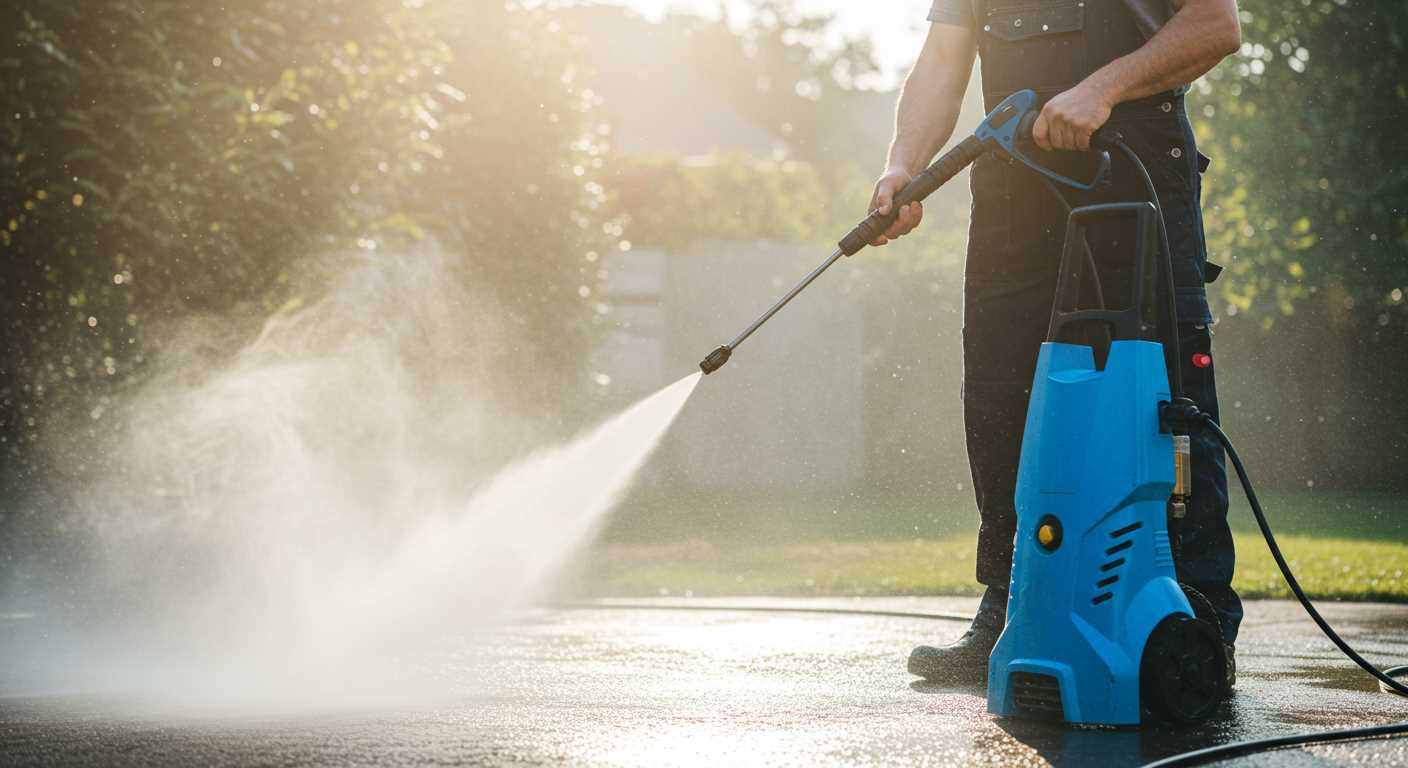



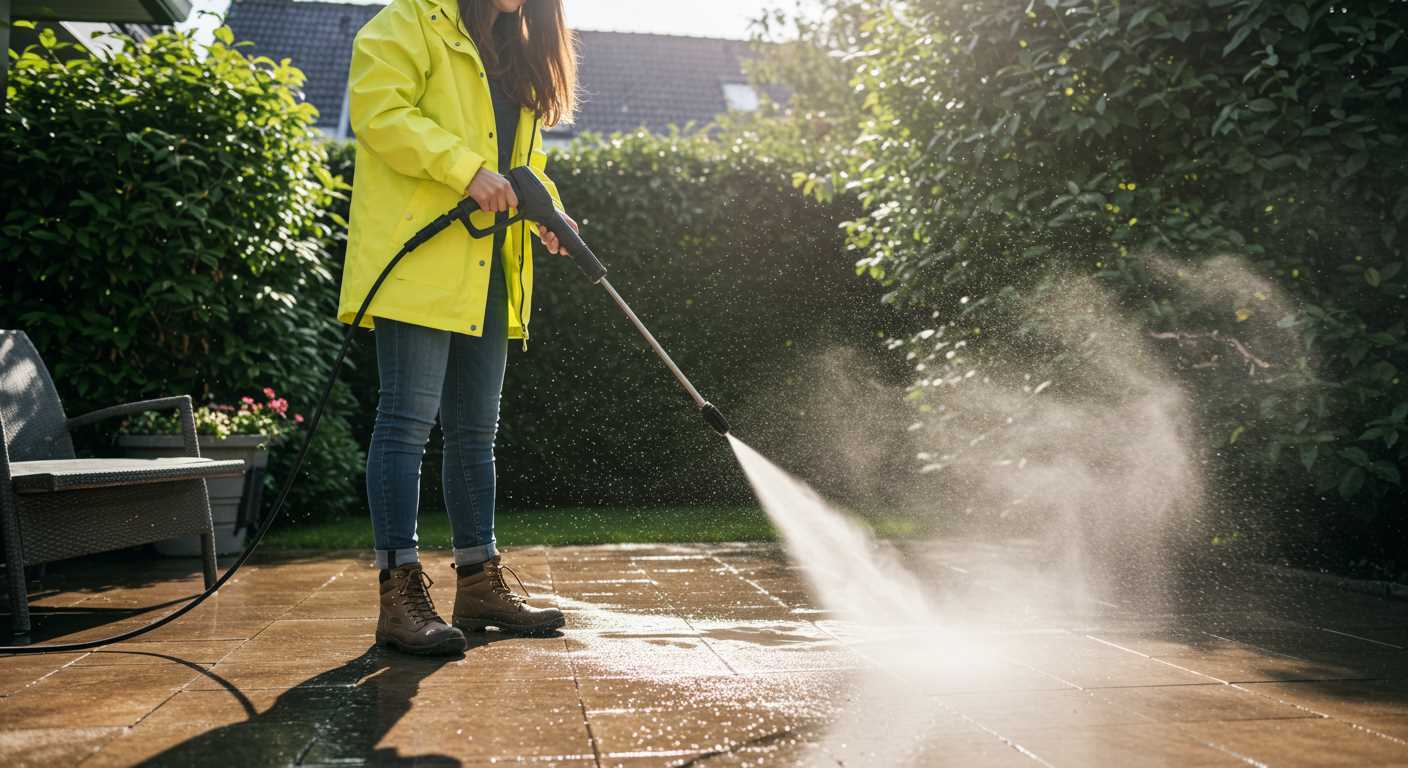
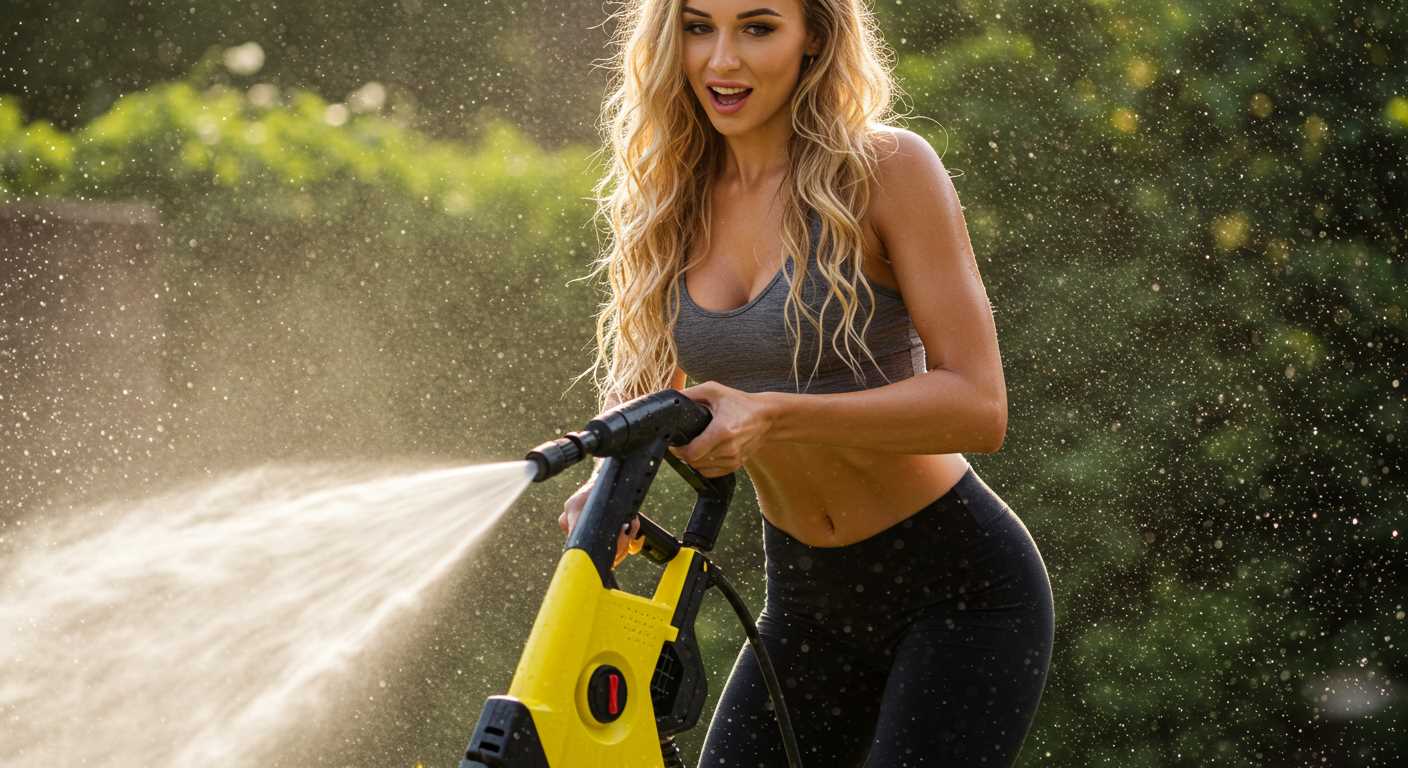
.jpg)


